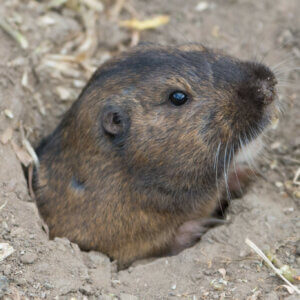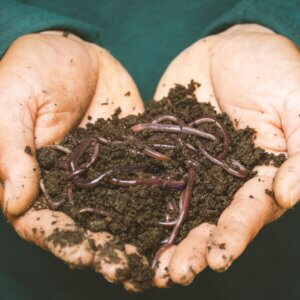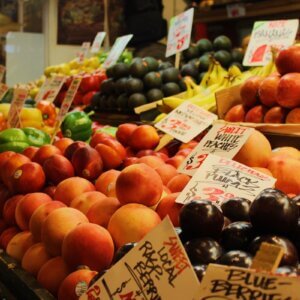If you enjoy your current plant varieties, you may want to save the seeds for next year. A healthy garden, both flowers and vegetables, is certainly something to be proud of. Inevitably there will be some plants that you prefer over others, and as luck will have it, some of these plants will be annuals. In my own experience, I have had great luck with some of my garden plants that scatter seeds. With some tips and tricks you can too.
Plants That Scatter Seeds
Many annuals will scatter their own seeds all over the garden, creating over the years a lush garden full of your favorite annuals. Some, however, you may want to collect and save to plant again next spring.
The Oswego Tea Plant
My Oswego tea (also called beebalm) has struggled valiantly for the past five years. When we moved to the country, I dug up the plant from my city garden and transplanted it. Some survived, while some didn’t. Four years of summer drought nearly wiped out my crop of Oswego tea.

This year’s flooding didn’t help much either, but the plants in the drier parts of our property are taller and more prolific than ever. I even have double-headed flowers! The flower of this plant is just full of seeds and as the flowers die out for the season, the seeds scatter all over the ground around it.

We even have beebalms growing in the driveway!
Black-Eyed Susans And Echinacea
Rudbeckia hirta (commonly known as Black-eyed Susans) and Echinacea (as well as other members of the daisy family) also scatter their seeds. Once these plants take root in a coveted sunny spot, seeds are scattered everywhere.

What starts as a tiny corner plot of Black-eyed Susans or Echinacea will eventually cover an entire garden space, as well as the driveway, walkways, or lawn surrounding them.
The Return Of The Petunias
There are many similar plants that will help propagate your garden. Some even appear mysteriously in very unusual locations. For instance, my son presented me with a hanging petunia plant several years ago. It suffered greatly, as that was one of our drought summers. Petunias in hanging planters in a drought, even if well-watered, don’t do too well. I avoided petunias the following years.
https://www.instagram.com/p/BYDSSAZlT1n
Suddenly, this year, I have a large crop of very colorful petunias growing between the tile stones of our front patio, quite a ways from where the hanging plant once hung. As much as I don’t like things growing between the tile stones, these petunias are far too pretty to dig up and they’re doing really well. So, they have their little corner of my patio, for this year anyway.
Nasturtiums And Sunflowers
Nasturtium and sunflower seeds attract rodents: the squirrel and chipmunk variety in particular, but also mice and moles. Okay, I get it, many people think they’re cute, especially the chipmunks. Given that we live in the country, its to be expected, but they can be very greedy and extremely destructive.

The first year I planted nasturtium and sunflower seeds, they were dug up within hours. I tried starting the plants indoors. Once they were two-inches tall, I transplanted them outside. These were also dug up within hours. The seeds, which were still rooting, were more or less intact and still an attraction as food.
It didn’t matter that I had numerous bird feeders scattered around the yard to feed the wildlife. It also didn’t matter that a sunflower in full bloom would produce many more edible seeds than the ones I had planted. These nasturtium and sunflower seeds had to be consumed – immediately. At least according to my resident rodents.
Detracting The Rodents
Not one to give up, I started more seeds indoors. Once they were two-inches tall, I transplanted them outside. However, this time I inserted numerous plastic forks in the soil around them, with the prongs sticking upwards. Nothing like something prickly to keep the rodents away. It worked! Once the plants were matured and growing well, the forks were no longer visible.
https://www.instagram.com/p/BUaKT5kl14v
My plastic forks have become something of a conversation piece among friends and neighbors. One particular friend jokes every spring about my new crop of plastic forks. It does raise some eyebrows, and it certainly ignites some interesting conversations.
Seed Collection Process
Once you know what flowers and plants are known for scattering their seeds, you can be better prepared for collecting them before those pesky rodents get to them. Some vegetables are also great for seed collection and can keep your home garden hearty, fruitful, and returning every year.
Nasturtiums And Sunflowers
Its very important to keep in mind that nasturtium spread, crawling up and along anything they can. So, these plants quickly migrate away from the plastic fork barricade. Once the nasturtium flower matures, it develops a hard-cased seed that will, once again, attract the rodents. Collect these seeds immediately, before the rodents find them. Dry them on a paper towel indoors (not in a shed or garage as they will continue to attract rodents) and then store them in a plastic container, glass jar, or ziploc (which can be reused year after year). Make sure to label the container before tucking them in a safe, dark, dry location until spring.
Same with the sunflowers. The seeds form in the center disk. Not only do rodents and birds enjoy these seeds, but humans eat them as well. The seeds are also the future of the sunflower. Collect some for next year’s crop, and collect them before the wildlife cleans out the supply.
Morning Glories, Hollyhocks, And Snapdragons
I have a healthy crop of morning glories, hollyhocks, and snapdragons every year.

These plants do seed themselves, but with the hollyhocks in particular, I like to collect some of the seed pods before the birds feast on them. I’ve been told that hollyhocks only bloom every other year. However, because I’m constantly planting the seeds I’ve collected, and the plants are constantly distributing a healthy supply of seeds, I have a prolific colorful display every summer.

Presumably snapdragons are annuals. Like hollyhocks and morning glories, they seed themselves each year and grow bigger and more colorful every summer.
Vegetable Seeds
Vegetable seeds are also easy to save for future seasons of sowing. I always have a few potatoes left over, from the previous crop or store bought, that are no longer edible. Plant them in the early spring, as soon as the ground thaws.
Tomatoes
I collect tomato seeds all year long. Lucky for us, the process is very simple! Slice a tomato and remove the pulpy interior. Lay the interior on a sheet of paper towel and cover it with another sheet of paper towels. Let the pulp dry and set aside for the next planting season. When it comes time to plant, the seeds may be left in the paper towel and then planted indoors to start the seedlings.
https://www.instagram.com/p/BKMaC-oAfqL
This technique works really well, and this way I’m assured of the types of tomatoes I enjoy the most. There are so many tomato varieties available to grow, it’s nice to know that something I really like will be in my veggie patch year after year.
Green Peppers
Green peppers (and other peppers, for that matter) have a very substantial supply of seeds in their core. Instead of just chucking the pepper core into the compost, I scrape the seeds onto a piece of paper towel, and cover them with another piece of paper towel. Then, as with the tomatoes, I let the seeds dry and put them away for the next growing season. Alternatively, I have planted the entire core of a green pepper and successfully grown several plants from that.
Squash
Squashes are similarly full of usable seeds. Clean away the pulp and lay them on a paper towel to dry before storing the seeds for the winter.
Lettuce
How about lettuce seeds? Well, why not! Once the lettuce plant has finished growing edible leaves, it shoots up a stalk full of seeds.
https://www.instagram.com/p/BRWKHzDB2Sy/?tagged=lettuceseedlings
Let the seeds mature and then clip the shoot, dry it on a paper towel, and store for the winter.
In Summary
There’s no need to purchase new seeds year after year. Once you know the means to harvest your seeds, you will reap the benefits of a healthy crop of your favorite foods and flowers, year after year.
Today’s post is brought to you by award-winning author and artist, Emily-Jane Hills Orford. When this author isn’t writing, creating collage paintings, working on her needlework or composing, you’ll find her in the garden. Even in the winter, gardening is not far from her thoughts as she plans and prepares for the next season and the next growing adventure. Using pressed flowers from her garden, this author/artist/composer, is gardening indoors with multi-faceted garden ideas re-created on canvas.










































Leave a Reply